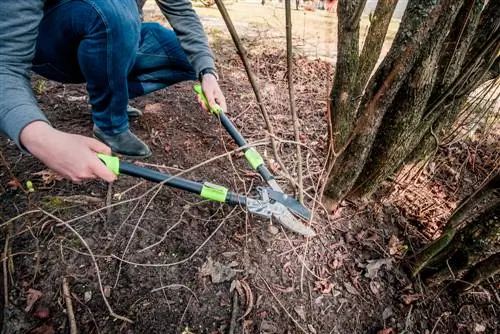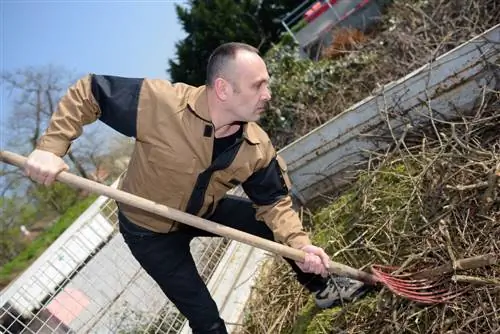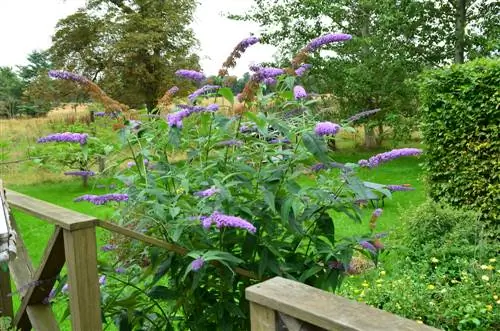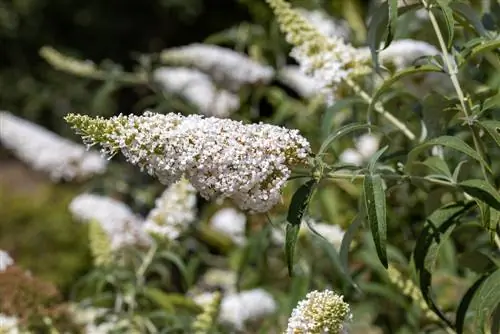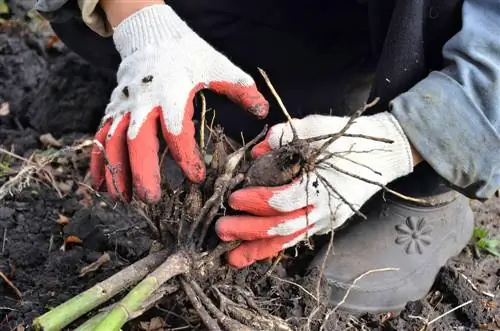- Author admin [email protected].
- Public 2023-12-16 16:46.
- Last modified 2025-06-01 06:02.
There are many reasons why a buddleia has to move from its location: Be it because you want to redesign the space, you no longer like the plant or it has simply become too big and therefore takes up a lot of space. When digging up the buddleia - which, by the way, is not related to the common lilac! - By the way, you should always remove the rootstock, otherwise the stubborn plant will sprout again and again.
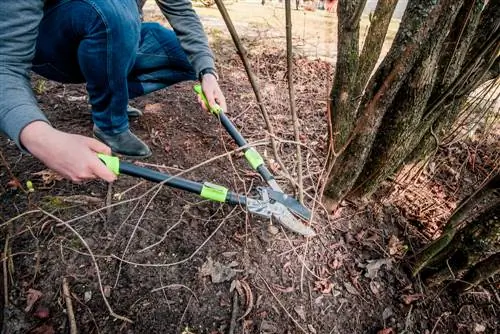
How do I remove a buddleia with roots?
To remove a buddleia including its roots, cut the plant just above the ground, mark the digging radius, cut off the roots and loosen the root ball with a digging fork. Then lift out the rootstock and fill the hole with topsoil.
Why you have to remove a buddleia including the roots
Buddleja davidii in particular is difficult to get down in this regard, as this species continues to sprout reliably even after a hard winter in which all above-ground parts of the plant are frozen back. The roots of the buddleia are very vital and will always look for a new way to the surface of the earth after the bush has been cut. So if you want to get rid of the buddleia for good, you can't avoid clearing the rootstock.
Dig up buddleia: This is how it works
The best way to do this is as follows:
- First cut off all above-ground parts of the plant to just above the ground.
- Measure the height and width of the bush beforehand.
- Now mark the digging radius using a piece of string and a few stakes.
- This should have a diameter equal to the height of the bush.
- Now use a spade to pierce the soil all around, leaf deep.
- Cut off all roots.
- The older the buddleia is, the wider its root system is.
- You probably won't be able to remove them all anyway.
- Now take a digging fork (€139.00 on Amazon) and loosen the root ball.
- This is done by jerking back and forth vigorously.
- Finally, pry out the rhizome.
Then you should fill the resulting hole with fresh topsoil. Before you plant another plant in this spot, you should - if possible - wait another year or two. This is especially true if the buddleia was previously in this location for a very long time. During this time, the soil has adapted to the plant, so that other plants will have difficulty growing due to the composition of the living creatures in the soil.
Tip
If the buddleia is not only to be dug up but also moved, just cut it back by about a third.

